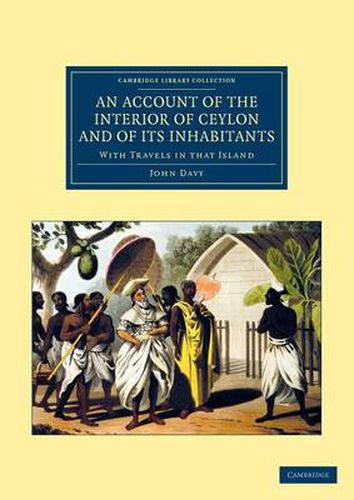Readings Newsletter
Become a Readings Member to make your shopping experience even easier.
Sign in or sign up for free!
You’re not far away from qualifying for FREE standard shipping within Australia
You’ve qualified for FREE standard shipping within Australia
The cart is loading…






John Davy (1790-1868), the younger brother of the chemist Sir Humphry Davy, published this account of Ceylon (present-day Sri Lanka) in 1821. An army surgeon and later Fellow of the Royal Society, he also wrote books on the Ionian Islands and the West Indies (also reissued in this series) and edited his brother’s collected works. This book is a detailed study based on interviews with the islanders and Davy’s own observations during his four-year visit. Part I is an overview of the natural history of the island - including its geography, geology, zoology and climate - as well as its people, demography, political system and culture, including architecture, craftwork and languages. Part II details Davy’s travels within the country. With a number of beautiful reproductions of native drawings, as well as Davy’s own, the work remains a rich resource for the insights of a Victorian polymath into early nineteenth-century Ceylon.
$9.00 standard shipping within Australia
FREE standard shipping within Australia for orders over $100.00
Express & International shipping calculated at checkout
John Davy (1790-1868), the younger brother of the chemist Sir Humphry Davy, published this account of Ceylon (present-day Sri Lanka) in 1821. An army surgeon and later Fellow of the Royal Society, he also wrote books on the Ionian Islands and the West Indies (also reissued in this series) and edited his brother’s collected works. This book is a detailed study based on interviews with the islanders and Davy’s own observations during his four-year visit. Part I is an overview of the natural history of the island - including its geography, geology, zoology and climate - as well as its people, demography, political system and culture, including architecture, craftwork and languages. Part II details Davy’s travels within the country. With a number of beautiful reproductions of native drawings, as well as Davy’s own, the work remains a rich resource for the insights of a Victorian polymath into early nineteenth-century Ceylon.